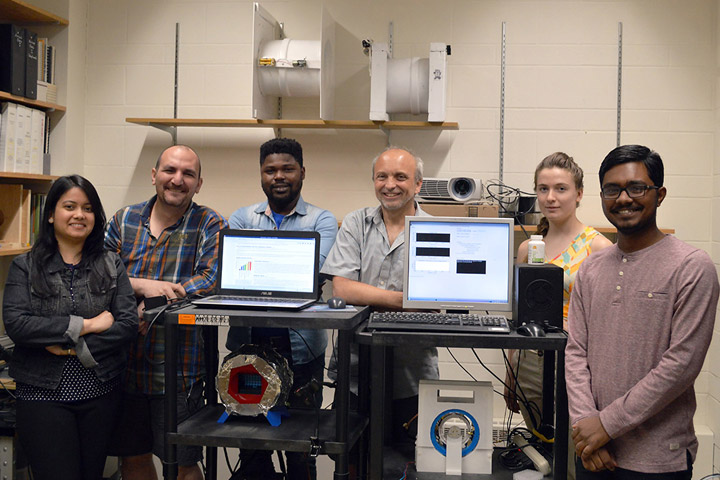A new lightweight MRI device being built and designed at the University of Saskatchewan will help monitor the health of astronauts during space missions.

The ankle device will monitor bone and muscle health during prolonged trips in space where weightless conditions lead to the loss of bone and muscle mass.
Gordon Sarty, the interim chair of biomedical engineering and head of psychology at the university, said he has always been fascinated with space and had a dream of one day walking on the moon.
Instead, he turned to research and engineering.
“I worked as an engineer on space projects at SED Systems in Saskatoon. It was a dream job, but I returned to graduate school in part because I wanted my own project,” Sarty said.
“This MRI work is that project. I may not make it to the moon, but my MRI will.”
Along with meeting high safety standards, there are also weight considerations.
A regular whole-body MRI that scans patients in hospitals weighs about 15 tonnes. The portable ankle-sized MRI, or “Merlin,” will weigh about 30 kilograms.
- Ontario First Nation declares state of emergency amid skyrocketing benzene levels
- Do Canadians have an appetite for electric vehicles? Experts are divided
- Nearly 200 fossil fuel, chemical lobbyists to join plastic treaty talks in Ottawa
- More financial institutes are offering crypto-services, survey shows
It will be tested in the spring of 2019 using a steeply diving and climbing jet to create zero-gravity conditions.
The goal of the team is to have it on astronauts on the International Space Station by the early 2020s.
Sarty already has an idea for his next project.
He wants to design and build a helmet-sized device where access to a portable MRI could save the lives of people with potentially fatal head injuries – whether at a deep-space station or closer to home in remote areas such as northern Saskatchewan.
Sarty was awarded a $100,000 contract by the Canadian Space Agency on Monday to design and engineer the ankle-sized MRI.
He was previously awarded $500,000 from CSA in 2017 to build the ankle MRI.


Comments